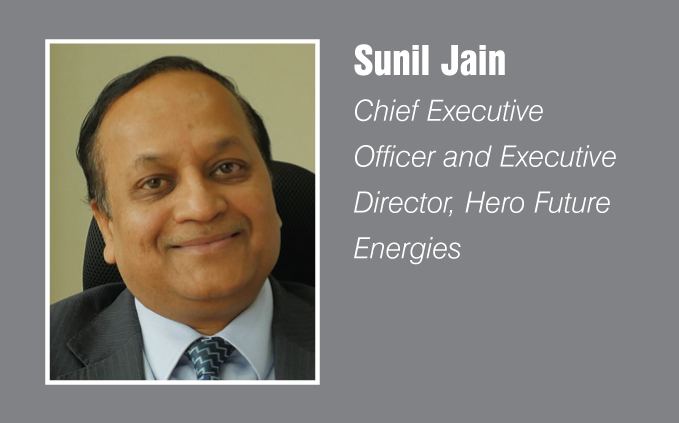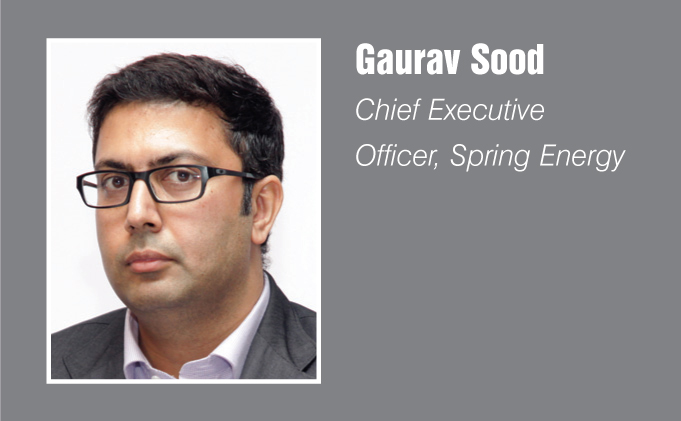
The solar segment in India has gained significant momentum over the past two years, resulting in record capacity additions in 2016-17 and an optimistic outlook for 2017-18 as well. Investments have been flowing in as tariffs continue to fall steeply, with a new low of Rs 2.44 per kWh being achieved in the recently concluded Bhadla Solar Park tender. Despite the positives however, the sector faces several challenges that need to be resolved at the earliest. These pertain to lax enforcement of the renewable purchase obligations (RPOs), slow implementation of net metering regulations and lack of clarity regarding the forecasting, scheduling and deviation settlement mechanisms in a number of states. The impact of the goods and services tax (GST) on the solar power segment is also uncertain. Moreover, the steep decline in prices poses a major threat to the financial health of module suppliers. This is also a blow to domestic manufacturers and the government’s plans to promote domestic manufacturing. At the “Solar Power in India” conference organised by Renewable Watch, industry leaders discussed the current state of the segment, key issues and future outlook for the segment. Excerpts…
What are the key issues being faced in the solar power segment? What is your opinion on the low bid of Rs 2.44 per unit?
I remember the time when the power market was opened up in 1992. There was absolute mayhem in the market, and it finally settled down after 1997. Then, from 2006 to 2009, there was a lot of coal- and hydro-based capacity coming up, but those plants are in a dismal state today.
Last year, Fortum quoted a price of Rs 4.34 per unit in the Bhadla auction and, according to some, was also responsible for disrupting the market. Whether the Rs 2.44 per unit bid is viable or not is not the point because in the e-bidding process, it is no longer about just the financial and technical parameters; rather, the emotion is to go ahead and get the bid. Also, it is important to understand that everything will not work as assumed while quoting the tariff bids and one must be ready for contingencies in case of low generation and revenues.
The Rs 2.44 per unit bid was reached by speculating on the various parameters. However, it is not sustainable. Even if the panel pricing is taken to be 26 cents per watt, which is speculative given that panels are being sold at 32 or 31 cents per watt at present, we get only a single-digit return on equity. If there are companies that are willing to work with such low returns, then a tariff of Rs 2.44 per unit works. It does not work for us, but it could definitely work for somebody who wants just 8 per cent returns.
The power industry is going through a difficult phase. On the one hand, the government is still promising uninterrupted power for all, which should ideally have given a big boost to the power sector, and on the other, the country is declared to be power surplus. If the power sector and the GDP growth rates are analysed together, the elasticity of demand factor currently stands at 0.7 or maybe even 0.6, which is quite low, as it should be 1:1, which means that the power sector should be growing at the same rate as the GDP.
The problem seems to be that while there is an ambitious target of setting up 100 GW of solar power, its consumption is questionable. The only two ways to integrate this power into the grid is by either shutting down the existing thermal plants or increasing demand. However, at the moment, neither of these options is working. Therefore, growth in the solar industry could possibly be slowing down. Moreover, there is enough capital in the market. Too many people are chasing the few projects available, which has increased competition levels and brought tariffs down to Rs 2.44 per unit. I will not be surprised if the next bid discovers tariffs below Rs 2.25 per unit. Rational tariffs are possible only if there are enough bids for everyone. Even a stable 15 per cent return, instead of 20 per cent, is good enough if it is rational. The government can work towards opening up more opportunities. This year, the industry will hardly see any tenders and, therefore, against a target of 10 GW, the commissioned capacity may not touch more than 7 GW. It could fall further to 5 GW next year.
There is irrational bidding in the market in this phase of the solar segment curve. Little technological innovation has taken place of late and yet tariffs have fallen from Rs 3.33 per unit to Rs 2.44 per unit in the past three months, which only indicates that there is disruption. We have had past experiences in roads, shipping, ports and other sectors with bidding mechanisms, where companies have gone overboard and become bankrupt due to faulty banking systems. Hopefully, in this segment, the banking system will be more rational. Therefore, to avoid pitfalls, it is important to fund the project with your own equity. Capital costs will continue to fall due to technological innovations, but business models would need to change as well. These models would be analogous with the microfinance model, which did not exist for lending until a few years ago. Similarly, things will have to change and there will have to be collaborative efforts between discoms and developers.
There is a high level of capital chasing in the solar segment at the moment. There are limited projects and so the tariffs are aggressive. At the same time, there are ways to obtain free financing, create economies of scale by doing much larger procurement. Of course, these are not the returns that investors would agree with but, over a long period of time, these projects can be optimised and respectable returns can be achieved. There are compulsions for each player, big or small, that drive them to reach those levels of speculative tariffs to win projects.
How is the scenario likely to change over the next few years in terms of costs and technology? What specific impact will this have on the Indian solar segment and your investment plans?
Sanjay Aggarwal
Capital investment has not gone in to drive power demand, especially in the big industrial consumer segment. India cannot afford to stay away from the capital expenditure cycle for very long and it is expected that the cycle will improve. In the solar segment, people are coming in and are aware that their investments will find their way into projects; there is no leakage of money here. So, from a five-to-ten year perspective, we may not need to be too concerned. There will be a couple of difficult years in the near future, but the cycle will improve and demand will go up. That is when we will see the desired returns on investments.
Sujoy Ghosh
The reason that international investors are positive about India is that the country represents an opportunity for solar that is not there in many parts of the world at the moment, aside from China.
Sunil Jain
Our investment plans have not changed and our target to install 2.5 GW of cumulative solar capacity by 2020 remains intact. While the plans do not change, lack of opportunities could delay the influx into the market. Tariff is certainly a cause for concern as such low levels are risky. The Tamil Nadu bid was probably the riskiest in recent times. No discom payments have been made for the past year, grid capacity is not available, power purchase agreements (PPAs) are not bankable and yet, the bid was oversubscribed by 100 per cent. In fact, one company bid for the entire 1,500 MW. If this 1,500 MW plant were to shut down for even one day, it could spell disaster for the grid. Therefore, I still believe that bidding is not being done rationally.
If the demand for domestic content picks up, everything could fall into place and discoms would be happy to purchase solar power at Rs 2.50 per unit. The bids have fallen to this level due to the falling costs of Chinese modules as well as of balance of system (BoS). In addition, interest costs have reduced. So, if the interest rate is 9 per cent, I could be bidding at 13 per cent or 14 per cent. All of these have come together, along with a desperation to win projects, to bring tariffs down.
Satish Mandhana
Global investors, particularly pension funds, are long-term investors looking for cash flows, and most of their money is directed towards buying operating assets. Lower capital yield works for them because the exchange risk is unpredictable. So, foreign investors are suddenly looking at a big opportunity. They do not want to take a risk by investing money in greenfield project development where they have lost money in the past. To that extent, they would like to invest in a brownfield project where there is the cushion of an existing cash flow.
Gaurav Sood
The logic for private equity firms to invest in upcoming solar companies is that India still stands out as one of the few markets where an investor can enter with conviction that a project will definitely be built. Of course, there are some hiccups right now, but other countries have it much worse. For example, countries like South Africa come out with one tender a year. So, investors see a long-term commitment and a roadmap for building a platform in the solar segment in India. Again, banking has made things comfortable. Today, long-tenor loans, of 20-22 years, are available.
What are your recommendations for the Ministry of New and Renewable Energy?
Sanjay Aggarwal
The government has policies that are great enablers. But when it comes down to implementation, for instance, site execution, there are challenges and operational issues. There are also challenges that we face as a multinational corporation. For example, different land and infrastructure agreements have different duties levied on them. Instead of a stamp duty of Rs 0.6 million, for example, the company ends up paying Rs 18 million. Another issue is that purchasing power from the grid has become expensive in many states. For example, in one of the states, we pay Rs 35 per unit for procuring power from the grid, whereas we are supplying power to the grid at Rs 5.40. Therefore, implementing net metering is a must. Taking another example, the Goods and Services Tax for the solar segment has been the subject of much discussion over the past two months. There was a major debate about taxing the modules at 5 per cent or 18 per cent, before it was finally settled at 5 per cent. There are issues with respect to BoS, of which a few components, such as inverters, have been settled, but the taxes on the rest continue to be ambiguous. A developer’s primary job is to set up a plant and produce power, instead of going to the judiciary to settle legal and regulatory issues. Also, any changes in law will trigger a situation where cases will be filed and investment will be entangled in the legal system for a long time. Therefore, there should be greater certainty regarding the regulatory regime.
Sujoy Ghosh
We would like to recommend greater predictability of demand. There has been a fairly volatile cycle in this regard and the government can look at stabilising it. As the government is the one formulating the RPO policy, which is the primary driver for solar power offtake, it would be in the industry’s interest to clearly predict the demand from utilities.
Sunil Jain
We believe that interference from the government in this segment should be minimal. We have now moved to a bidding-based project allocation process, which makes the market self-sustaining. At this juncture, we do not require policy interventions that are being changed by the hour; instead, give us the right infrastructure.
Satish Mandhana
The biggest constraint for the sector is the lack of increase in power demand. Our recommendation is to take drastic measures, including zero customs and import duties on e-vehicles. We believe that e-mobility will change the scenario in terms of power demand in the country, which will solve many other associated problems.
Gaurav Sood
The government has helped improve the business conditions of the segment considerably. With the ambitious targets set by the government, clear visibility on bids and tenders, whether through RPOs or other enabling mechanisms, is required. In addition, the government needs to create enabling policies for land acquisition and grid evacuation, which will help rapid scaling up of installations.








